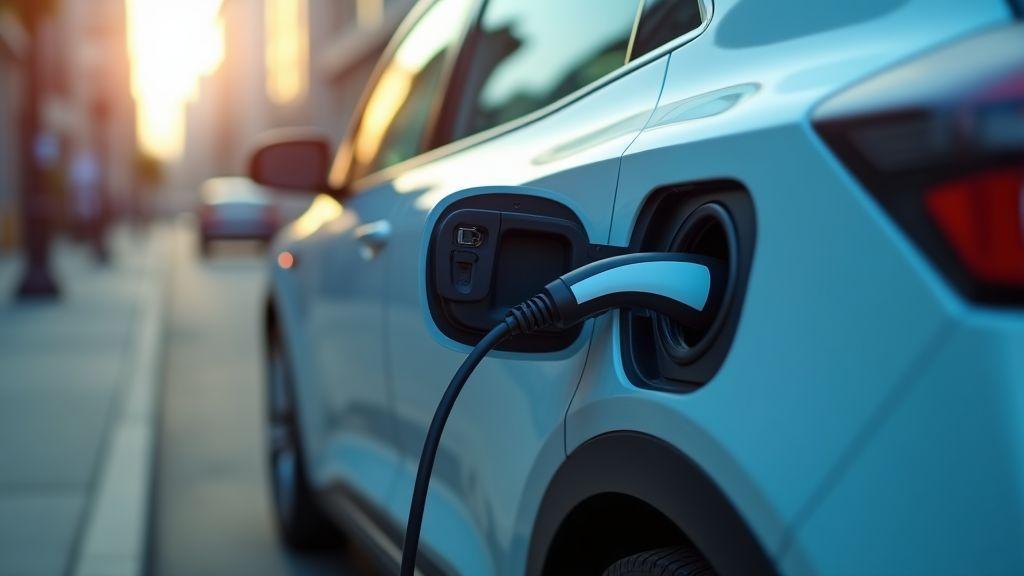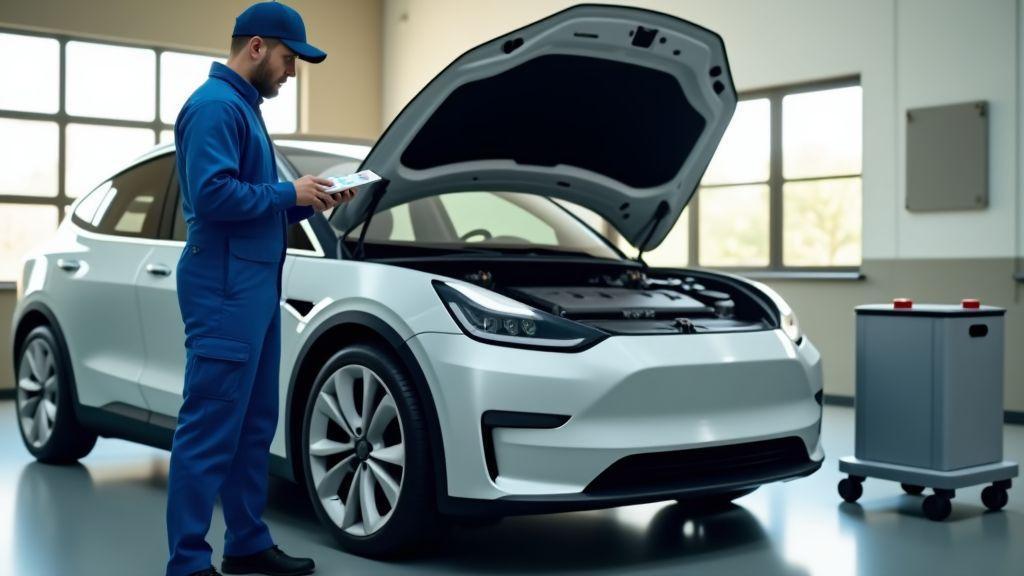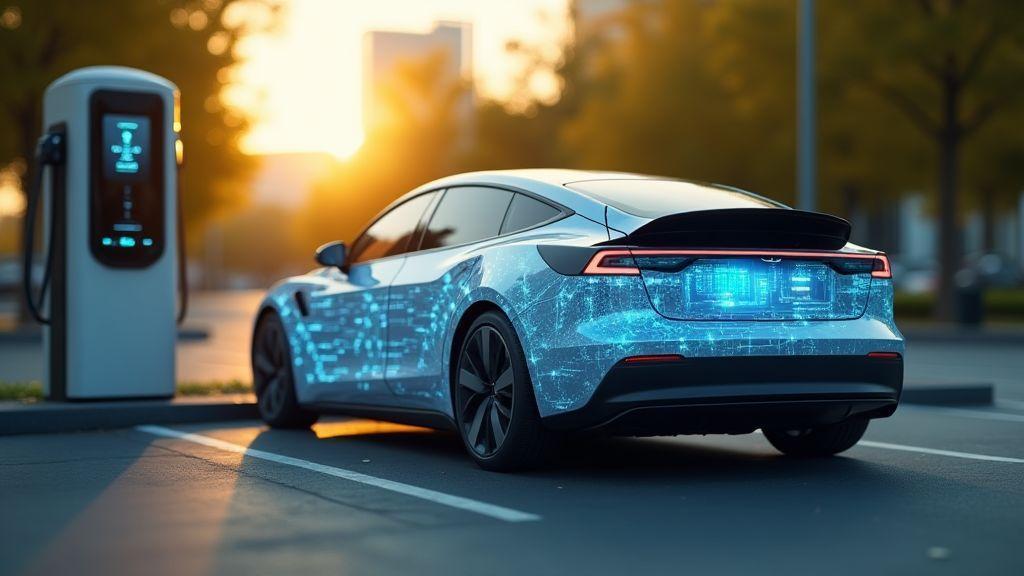How Long Do Electric Car Batteries Last? Full Guide
This guide shows what to expect from battery life and typical lifespan for most drivers. It explains what capacity loss means for your daily range, gives key stats, and outlines the factors you can control: charging habits, temperature, usage patterns, and charging speed. You’ll learn how degradation works, the difference between calendar and cycle loss, what studies and makers report, and practical ways to extend battery life. It also breaks down replacement cost, warranty tips, tools to monitor battery health, and the right questions to ask before you buy.

Key Takeaway
- You can expect your EV battery to last many years with normal use.
- Charging and driving habits materially affect battery health.
- Manufacturer warranties typically cover major battery loss.
- Simple care routines slow wear and protect range.
- Replacement is possible and can be costly, but prices and second-life options are improving.
What you can expect from electric vehicle battery life expectancy and average lifespan
Most modern EV batteries last far longer than early models. Think of the battery like a smartphone battery scaled up: it will lose some capacity over time, but it rarely fails suddenly. Typical warranties are eight years or about 100,000 miles, and many packs keep usable capacity well beyond that.
Battery life depends on how you drive and care for the car. High temperatures, frequent DC fast charging, and constant heavy loads speed up capacity loss. Cars with active thermal management hold charge better in hot and cold climates, so where you live matters as much as how you drive.
Replacement is less common than many fear. Many drivers get 8–15 years of useful range before a big drop forces attention. The used-EV market and second-life battery uses (stationary storage) make replacements and recycling easier and cheaper than before.
| Typical scenario | Typical lifespan (years) | Typical capacity remaining |
|---|---|---|
| Daily driver with mixed charging | 8–12 | 75%–90% after 8 years |
| Warm climate, frequent fast charging | 6–10 | 60%–80% after 8 years |
| Mild climate, mostly AC charging | 10–15 | 80%–95% after 8 years |
How long do EV batteries last on average for most drivers
On average, most drivers see meaningful battery life for 8 to 12 years covering daily commuting and regular charging habits. Warranties give a safety net, but real-world owners often report slower loss than expected. See the official overview of EV battery lifespan for government guidance.
Small habits help stretch life:
- Keep daily charge between about 20%–80%.
- Avoid frequent DC fast charging when possible.
- Park in shade or a garage in hot climates.
- Use scheduled charging to finish right before you leave.
- Drive smoothly to reduce heavy drain.
What battery capacity loss means for your daily range
Capacity loss reduces the miles you can drive on a single charge. A 250-mile car at 80% capacity sees about 200 miles now. That’s a straight proportion, but actual range also varies with speed, weather, and accessory use (heat/A/C).
Loss usually slows over time: many batteries drop faster in the first few years, then the decline flattens. Plan trips with a little margin, check range estimates, and adjust habits or routes as needed.
Key lifespan statistics you should know
- Most EV batteries lose around 2–3% capacity per year on average.
- Warranties commonly cover 8 years or ~100,000 miles.
- After ~100,000 miles many packs still have about 70%–90% capacity depending on climate and charging habits.
Factors affecting EV battery longevity you can control
You have more influence over battery life than you might think. If you search “How Long Do Electric Car Batteries Last? Full Guide” you’ll see a range of numbers, but your habits can push the battery toward the high end. Think in terms of cycles, heat, and charge depth: each full cycle wears the battery a bit, high heat accelerates wear, and deep or constant full charges add stress. For a technical briefing on aging mechanisms, read this analysis of battery aging mechanisms and drivers.
Practical changes:
- Use home charging for most power and set a max-charge limit.
- Avoid repeated long DC fast charges.
- Precondition the battery in cold weather.
These small daily actions add up to meaningful improvements in long-term capacity.
Charging habits: impact and changes to make
Charging behavior matters. Charging to 100% fills every cell to its limit and increases stress; charging daily to 80–90% reduces that stress. Most EVs let you set charging timers and max-charge limits—use them.
Fast charging spikes voltage and temperature. Use DC fast chargers for long trips or urgent top-ups; prefer slower AC charging for daily use.
Consumer-oriented practical tips to extend battery life can help you implement these changes.
- Set a daily charge cap around 80–90% and charge overnight at lower power when possible.
Temperature, usage patterns, and charging speed
Heat is the battery’s enemy—high temperatures speed chemical aging. Park in shade or a garage and use preconditioning while plugged in so the battery reaches ideal temperature without using stored energy.
Cold reduces immediate performance and increases energy needed to heat the battery. Short trips that never let the battery warm up can do more cumulative stress than a regular longer drive.
| Factor | Typical effect on battery life | How much you can control |
|---|---|---|
| Charging to 100% often | Accelerates wear | High — set charge limits |
| Frequent DC fast charging | Raises heat and stress | Medium — avoid when possible |
| High ambient temperature | Speeds chemical aging | Medium — use shade/garage |
| Short cold trips | Increased cycling and heating use | Low–medium — combine trips, precondition |
The biggest levers: charge level, charging speed, and heat exposure. Focus on those and you’ll gain the most life back.

Understanding EV battery degradation rate and how it works
Battery degradation is the gradual loss of the energy the battery can hold. You’ll notice it as shorter range or a drop in estimated miles left. It comes from chemical changes inside cells; over time the battery can’t accept or hold as much charge. This overview of lithium-ion degradation processes summarizes the chemical causes.
What speeds or slows the decline: temperature, depth of discharge, frequency of fast charging, how often the car sits unused, and how it’s charged. Small drops early on are normal. Warranties promise minimum capacity, but real-world loss varies by climate, charging habits, and model.
Calendar vs cycle degradation
- Calendar degradation: decline that happens with time, even if the car is seldom used. It’s driven by chemical reactions while the battery sits at a given state of charge and temperature. Storing at a very high state of charge in hot weather speeds this.
- Cycle degradation: decline from charging and discharging. Each full or partial cycle moves tiny amounts of material inside cells; deeper discharges and more cycles accelerate wear.
Typical annual degradation rates reported
- Manufacturer warranty math: ~2–4% (warranties often state minimum capacity after 8–10 years).
- Independent studies (modern EVs): ~1–3% under normal conditions.
- Older models / hot climates: ~3–6% in early years.
- Fleet / real-world data (e.g., large Tesla fleets): ~1–2%.
| Source type | Typical annual degradation | Notes |
|---|---|---|
| Manufacturer warranty math | ~2–4% | Warranty minimums after 8–10 years |
| Independent studies (modern EVs) | ~1–3% | Many recent vehicles show low annual loss |
| Older models / hot climates | ~3–6% | Early tech and heat cause faster decline |
| Fleet / real-world | ~1–2% | Large fleets often show modest yearly loss |
How you can monitor degradation metrics
Track kWh used per mile or rated range at full charge over months. Use the car’s state-of-health readouts or a Bluetooth OBD adapter with an app. Steps:
- Record full-charge range and usable kWh baseline.
- Re-check monthly under similar conditions.
- Log charging behavior and temperatures.
- Compare trends to expected loss to spot fast decline.
Practical ways for extending electric car battery life today
If you want answers to “How Long Do Electric Car Batteries Last? Full Guide”, the practical steps below help. Focus on three areas: charging, driving, and storage. Small, consistent changes add up.
Start with low-effort moves: set charging limits, avoid unnecessary fast charging, and park in temperate spots. Make these routine and you’ll see better range stability and slower capacity loss.
Best charging practices to protect battery health
- Keep daily charge between about 20% and 80%. Charge to 100% only for long trips and avoid leaving it at 100% for days.
- Prefer Level 2 (home or workplace AC) charging for daily use; use DC fast charging sparingly.
- Schedule charging during cooler hours and use smart-charging features.
| Charging type | When to use | Recommended frequency | Impact on battery |
|---|---|---|---|
| Level 1 (slow AC) | Overnight, infrequent use | Low | Gentle but slow |
| Level 2 (home/work) | Daily charging | High | Best balance of speed and longevity |
| DC fast charging | Road trips, emergencies | Occasional | Faster wear if used constantly |
Driving and storage habits that help
- Drive smoothly; avoid hard launches, repeated heavy braking, and sustained high-speed runs.
- If leaving the car idle for weeks, store at ~40–60% charge in a cool, shaded place.
- Precondition the battery while plugged in before driving in extreme temps.
Simple daily habits:
- Set charge limit to ~80% for daily use; raise to 100% only for trips.
- Plug in overnight to top up with Level 2 charging.
- Precondition cabin/battery while charging in extreme temperatures.
- Keep tire pressure correct and check software updates.

EV battery replacement cost and warranty guidance for your budget
Replacement costs vary widely. A small city EV might cost $3,000–$8,000 for a pack swap; a luxury or high-capacity pack can hit $12,000–$20,000 or more. Parts, labor, shipping, and new vs. refurbished options all affect price. DOE-backed research on reuse, recycling, and second-life options explores ways to reduce replacement costs.
Warranties change the math—many EVs include long battery warranties, so early failures often won’t hit your wallet. Out-of-warranty replacements are expensive, so factor battery health into a used-EV purchase.
If you need assistance with warranty questions or want to arrange diagnostics, reach out through the site’s contact page for guidance.
Typical replacement cost drivers
- Pack size (kWh) — major factor.
- Vehicle model/brand — luxury and rare models cost more.
- New vs. refurbished — refurbished reduces parts cost.
- Labor & reprogramming — varies by dealer and region.
- Shipping/handling and specialized tools.
| Factor | Typical effect on price |
|---|---|
| Pack size (kWh) | Major — larger packs cost more |
| Vehicle model / brand | Major — luxury/rare models cost more |
| New vs. refurbished | Moderate — refurbished lowers parts cost |
| Labor & reprogramming | Moderate — varies by dealer |
| Battery chemistry & design | Moderate — complex designs raise time |
| Shipping / handling | Minor–moderate — heavy, regulated items add fees |
What battery warranties usually cover and how to use them
Most warranties cover batteries for 8 years or 100,000 miles; some brands offer longer terms. Warranties often guarantee a minimum capacity (commonly 70%–80%). If your pack drops below that threshold within the warranty period, the maker will repair or replace it.
To use the warranty: keep service records, charging logs if possible, and ask the dealer for diagnostics if you notice rapid range loss — or contact the site for help documenting and escalating a claim. Save all paperwork and follow the warranty claim process.
How to reduce replacement risk and cost:
- Avoid constant 100% charges and repeated fast charging.
- Park in shade or indoors.
- Schedule software updates and dealer checkups.
- When buying used, ask for a recent battery health report and prefer cars with remaining factory warranty.
How to monitor battery health and pick an EV with a lasting battery
Treat the battery as the EV’s core: track state of health (SOH), charge cycles, and temperature history. Watch for sudden range loss and strange charging behavior.
- Check warranty details and what the maker defines as capacity loss.
- Monitor the battery over months, not days; small drops are normal, steep drops are a red flag.
- For used purchases, request logs or a dealer battery health report before you buy.
Tools and apps for monitoring
OBD-II dongles and phone apps can reveal deep SOH info on many EVs. Examples:
- Leaf Spy Pro for Nissan Leaf.
- ScanMyTesla for Tesla models.
- EVNotify, Torque, and other apps for multiple brands.
These tools show cycles, voltage spread, and temperature. Export logs and compare month-to-month. Note: some manufacturers limit third-party access — check warranty rules and any applicable terms of use before using a dongle. Also consider app permissions and data sharing practices outlined in the site’s privacy policy.
Choosing models with proven battery lifespan and reliability
Consider chemistry and brand track record:
- LFP (lithium iron phosphate) cells resist degradation and often last many cycles though they typically have slightly lower energy density.
- NMC (nickel manganese cobalt) packs offer higher range but require gentler care.
- Prefer manufacturers with solid software support and long warranty terms.
| Model / Brand group | Typical battery warranty | Practical note |
|---|---|---|
| Hyundai / Kia | 10 years / 100,000 miles | Long warranty; good thermal management |
| Tesla (most models) | 8 years / 100,000–150,000 miles | Some models use LFP; strong software support |
| Nissan Leaf | 8 years / 100,000 miles (varies) | Older Leafs had chemistry issues; check year |
| GM (Bolt) | 8 years / 100,000 miles | Recall history exists; recent models improved |
| Volkswagen / Others | ~8 years / 100,000 miles | Compare service network and warranty details |
Questions to ask before you buy:
- What exact battery warranty terms apply (years/miles and minimum capacity)?
- Can I see a recent SOH or battery report?
- Has the car had a battery repair or thermal event?
- What charging patterns did previous owners use (fast charging frequency)?
- What chemistry does this model use (LFP or NMC)?
Conclusion
You’re in good shape: modern EV battery life is measured in years, not months. With sensible charging habits, basic temperature care, and a few daily routines, you can push a pack toward the long end of the typical 8–15 year span. Think of the battery like a smartphone on steroids — it will lose some punch over time, but it rarely dies overnight.
Focus on the big levers you control: keep daily charges around 20%–80%, avoid constant DC fast charging, park in shade or a garage, precondition while plugged in, and check state-of-health periodically with built-in tools or apps. Those small, steady moves add up.
Warranties provide a safety net; they typically cover major failures and promise minimum capacity levels. Still, plan for the possibility of replacement cost when buying used. Prefer models with proven chemistry (LFP for durability, NMC for range) and solid manufacturer support.
For more in-depth reading on “How Long Do Electric Car Batteries Last? Full Guide” and practical tips, visit the Meridian Pioneer home page.

